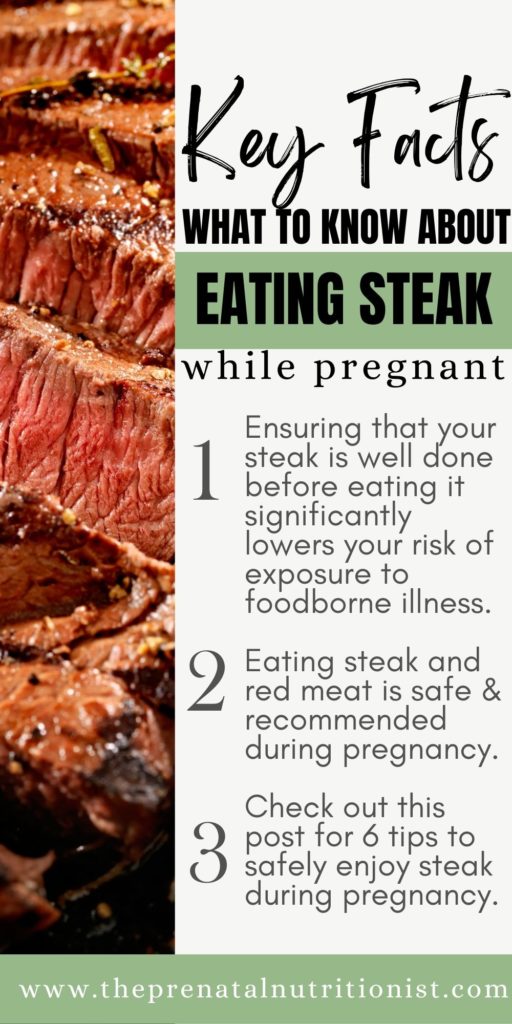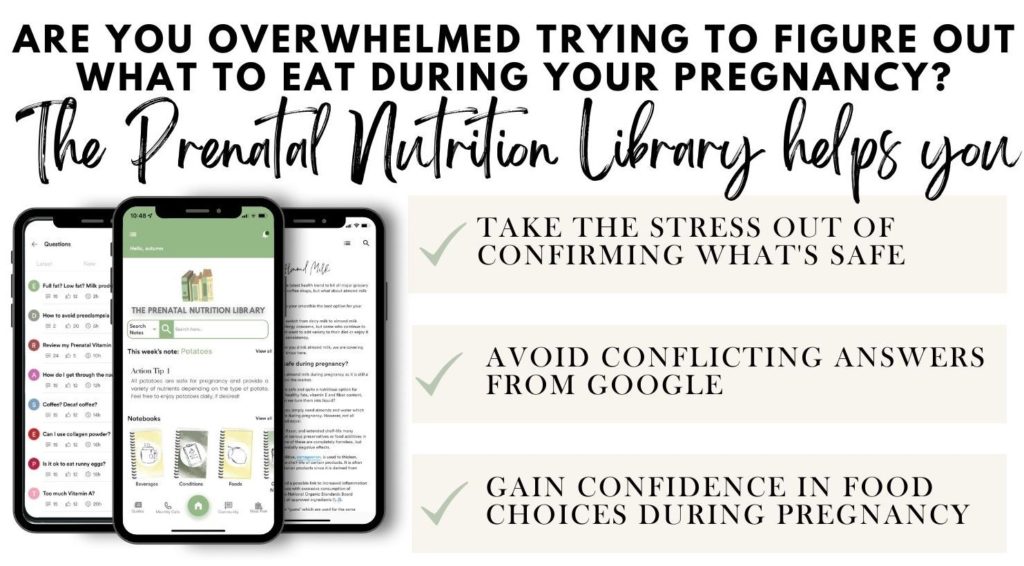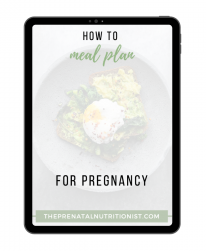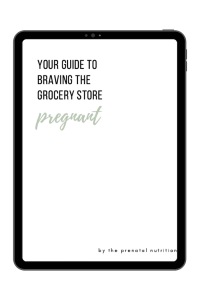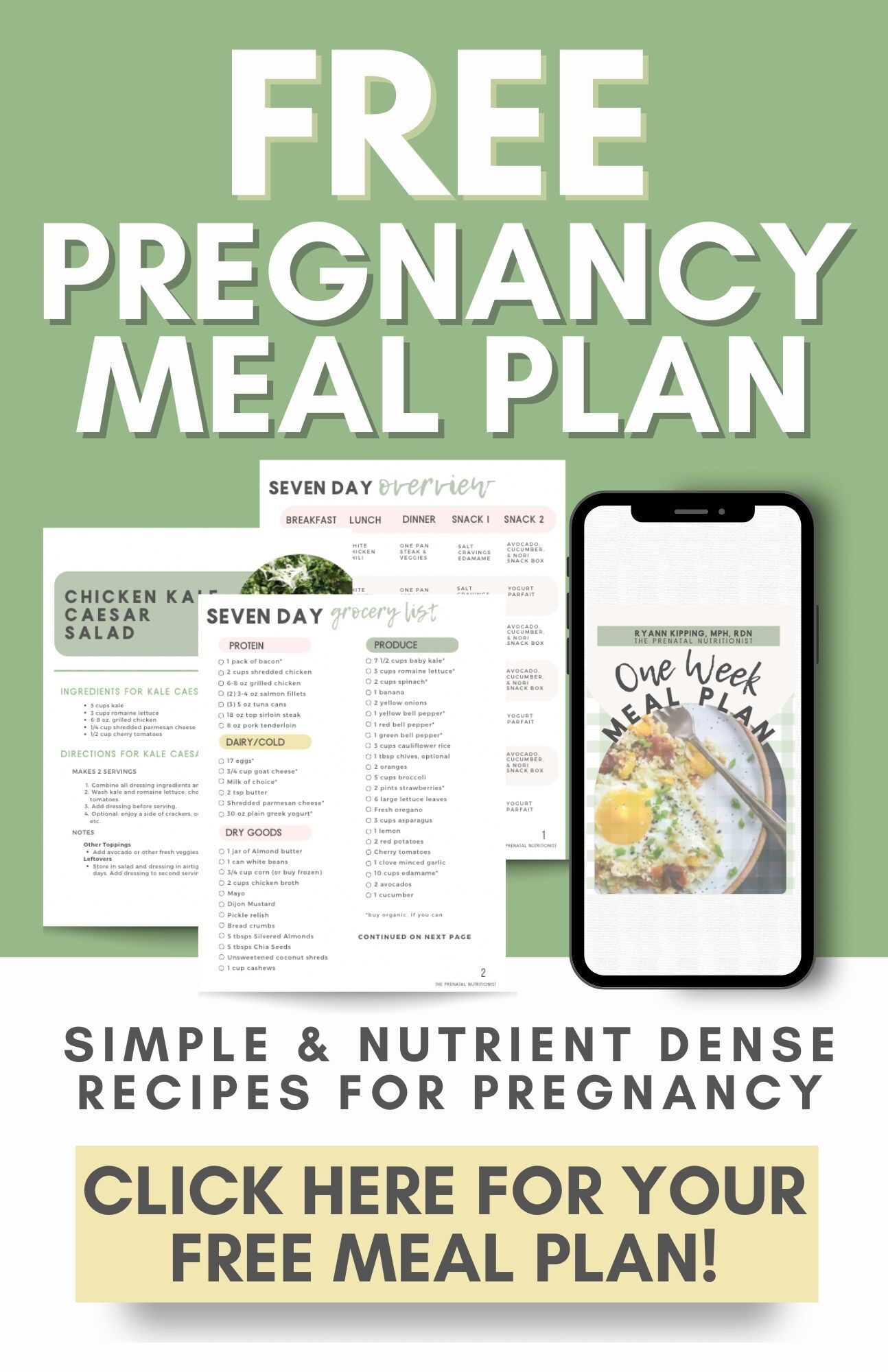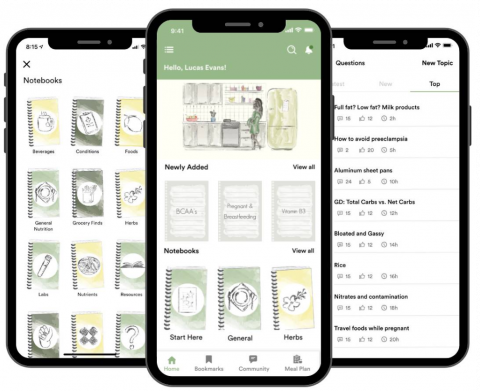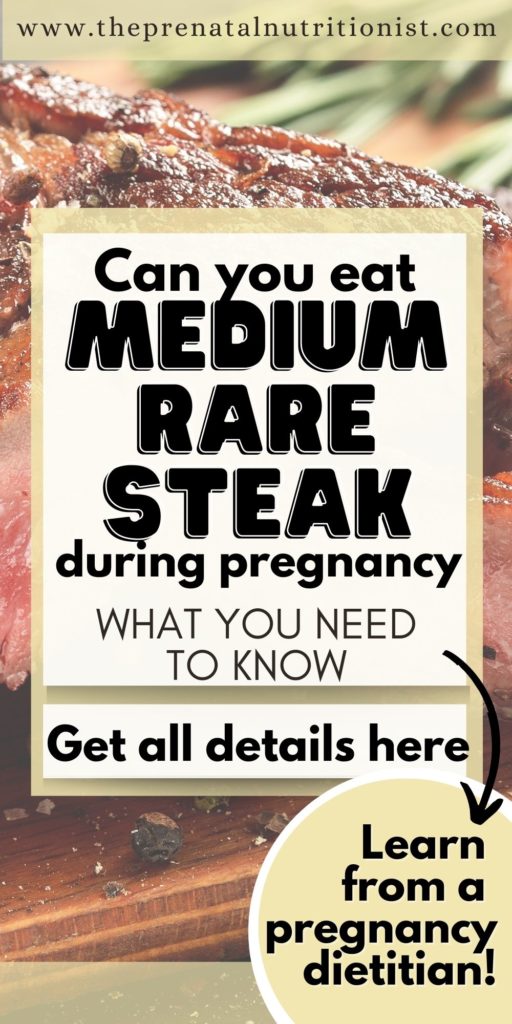
Many people would quickly name steak as one of their favorite foods. It’s hard to deny the deliciousness of a tender, juicy medium-rare steak. Naturally, many people still want to eat their favorite foods, like steak, when they’re pregnant and wonder if it’s safe to do so.
It’s a fair question since so much of the information given during pregnancy is about what foods to avoid. Medium rare steak is one of the foods I am asked about most often. To clear up any confusion, I’m dedicating this post to answering the common question, “Can pregnant women eat medium-rare steak?”
With that in mind, if you often question whether or not certain foods are safe for pregnancy and you just can’t seem to find a straight answer on Google – I’m here to help. The Prenatal Nutrition Library is the first searchable app for food during pregnancy, providing clear, reliable answers from pregnancy dietitians so you know what you eat is safe for baby. Download it here!
Now – let’s dive right into today’s topic…
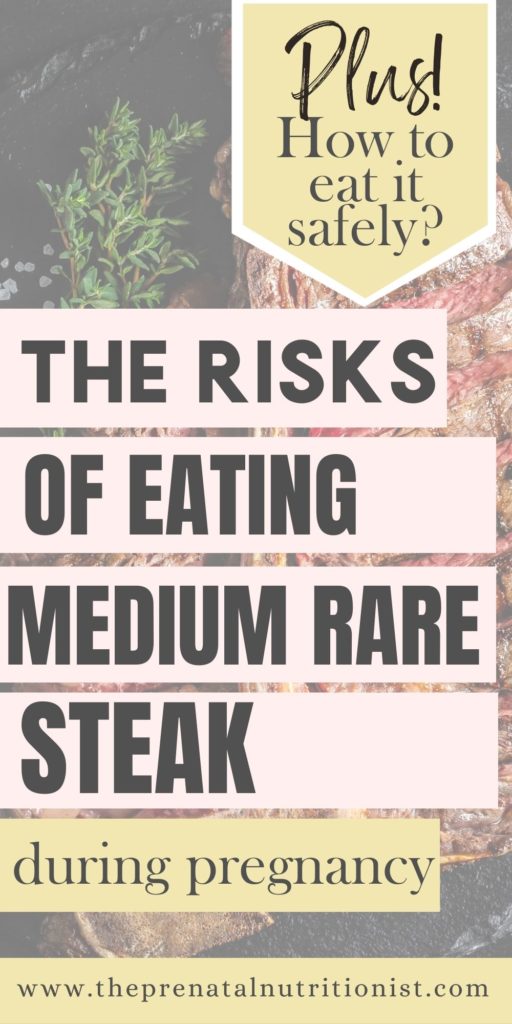
Can Pregnant Women Eat Medium Rare Steak?
Unfortunately, there is no universal temperature that corresponds to each doneness of meat: rare, medium-rare, medium, well-done, and so on. The best practice for food safety during pregnancy is to cook the steak to a minimum internal temperature of 145 F. The best way to know is to use a food thermometer when cooking at home. Typically, a medium-rare steak will not reach this minimum best practice temperature and, instead, be slightly less than 145 F. Meat cooked below this recommended minimum internal temperature will carry a slightly greater risk for the potential to cause foodborne illness.
If you do choose to consume medium-rare steak during pregnancy, I would recommend only having an option from a high-quality source that you trust is properly and safely handling the meat.
Potential Risk Of Eating Medium Rare Steak When Pregnant
Raw or undercooked meat carries the risk of toxoplasmosis.
Toxoplasmosis is a type of foodborne illness caused by the parasite Toxoplasma gondii. This parasite can be found in raw and undercooked meat, as well as dirty cat litter boxes, contaminated water, and more. This parasite has also been found in hot dogs and lunch meat. Toxoplasmosis can be particularly harmful to pregnant women and their unborn babies.
Some pregnant women who are infected by toxoplasma may not experience any symptoms, while others may experience fever, headache, and muscle pain. As for the unborn baby, toxoplasmosis can lead to preterm birth, stillbirth, and even miscarriage.
Eating undercooked beef has been linked to E. coli outbreaks.
Numerous E. Coli (Escherichia coli) outbreaks have happened over the last several decades. Some of those have been attributed to the consumption of undercooked beef. Raw or undercooked steak, as well as ground beef, hamburger meat, and fermented sausages, could potentially carry E. coli. Pretty much any food could be contaminated, not just meats. However, cooking to the minimum internal temperature helps to reduce the risk of contracting E. Coli.
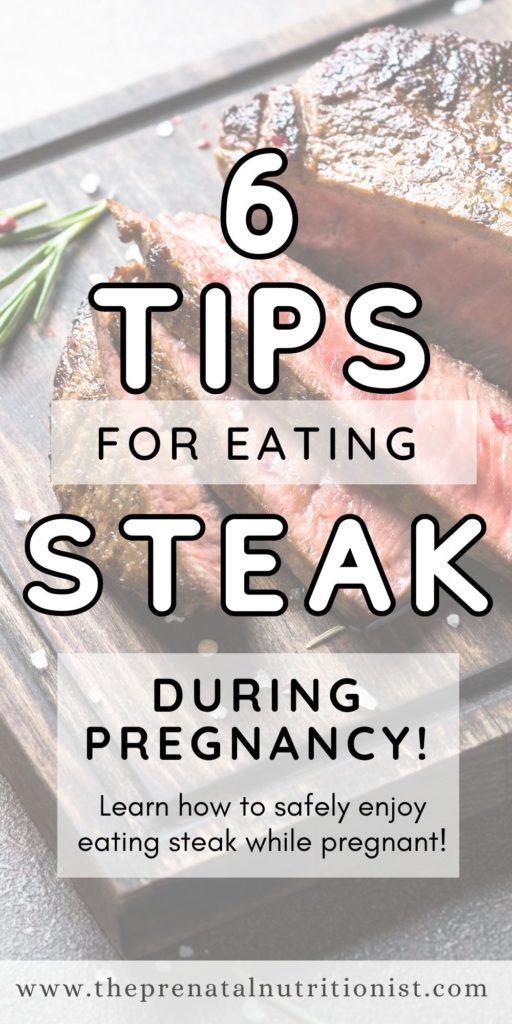
How To Eat Steak When Pregnant
Thoroughly cook your steak.
Your steak should meet food safety recommendations for pregnant women. This means it’s recommended steak be fully cooked to the proper minimum internal temperature. The minimum internal temperature recommendation for steak is 145F/63C.
Use a meat thermometer.
The only way to make sure that your steak is at a safe temperature to eat is to use a meat thermometer. A good meat thermometer is a great kitchen tool staple.
Don’t let the meat sit out for long periods.
It’s best to keep hot foods hot and cold foods cold. Food should not be left sitting out on the counter for long periods. No food should be left out for longer than 2 hours or longer than 1 hour on a hot day. Who wants to eat a cold steak anyway?
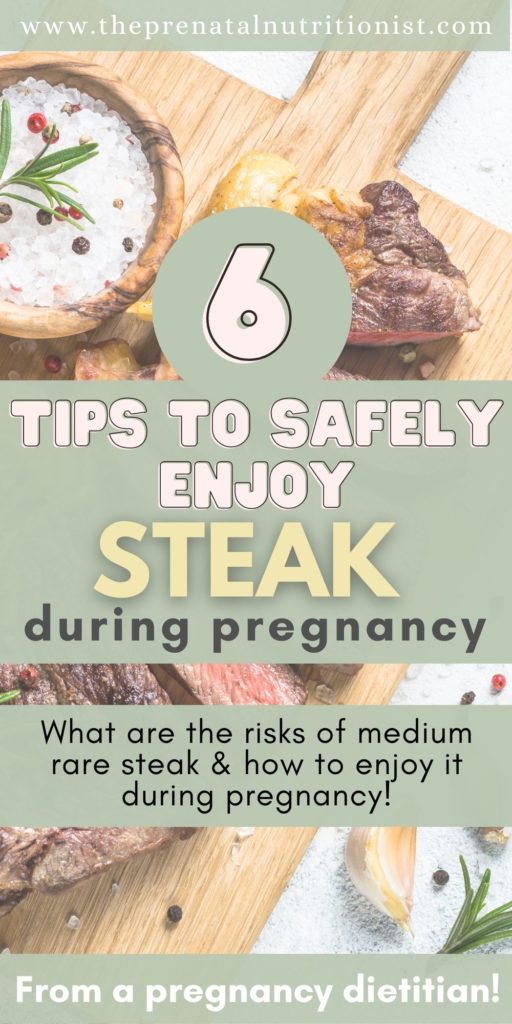
Thoroughly clean all utensils and surfaces when preparing meat at home.
When preparing meat at home, make sure you thoroughly clean every utensil, surface, and cutting board that the meat comes into contact with. This means using hot, soapy water to clean every utensil and cutting board you use. And, of course, frequently wash your hands before, during, and after cooking.
Separate raw meat from other food.
At the grocery store and in your fridge, always keep raw meat separate from other food. Keep it separated in the grocery cart, in shopping bags, and in the fridge to reduce the risk of cross-contamination.
Consider ordering medium-well or well-done steak when dining out.
There’s nothing wrong with dining out during pregnancy. It’s unrealistic for most people to make every single meal at home for nine months. A medium-well-done steak will most likely reach above the minimum internal temperature of 145 F. If you’re concerned, you can inform your waiter or waitress that you’re pregnant and need your meat cooked thoroughly. A well-done steak will reach 145 F.
Steak is a safe and delicious source of protein and many other nutrients for pregnant women, as long as it’s cooked to 145 F.
Ensuring that your steak is thoroughly cooked before eating it lowers your risk of exposure to foodborne illness. Contracting foodborne illness during pregnancy could potentially harm you or your unborn baby. That does not mean you will get sick from eating undercooked steak; this is just a slightly increased risk compared to a fully cooked option. I’ve written several posts about this risk on my blog, including my write-up on eating ham during pregnancy and more.
To learn more about foods to eat (and avoid) to support your pregnancy, join The Prenatal Nutrition Library. As a member, you’ll have all the information you need to support your pregnancy right at your fingertips with our mobile app! Download the app for FREE today to get a peek inside and grab your free 7-day meal plan for pregnancy too!
